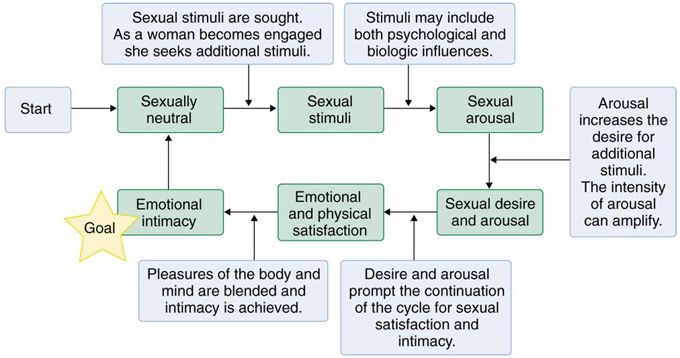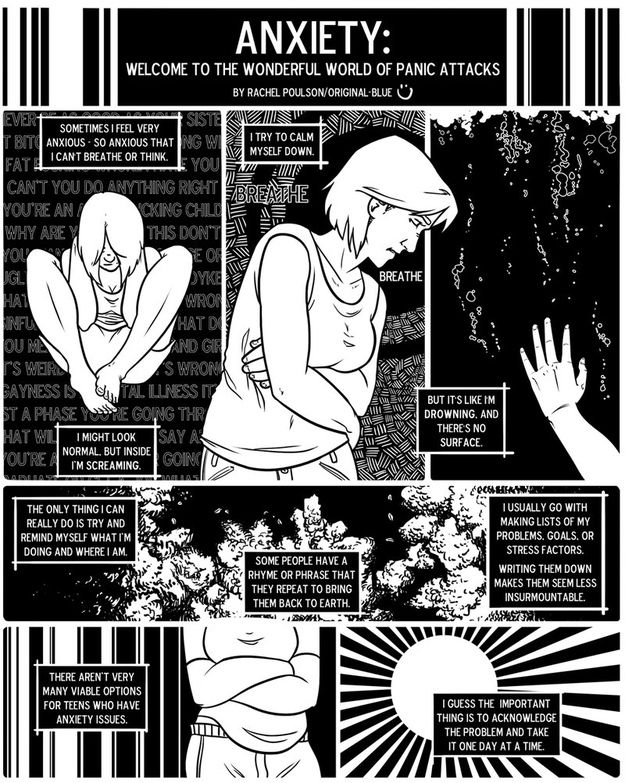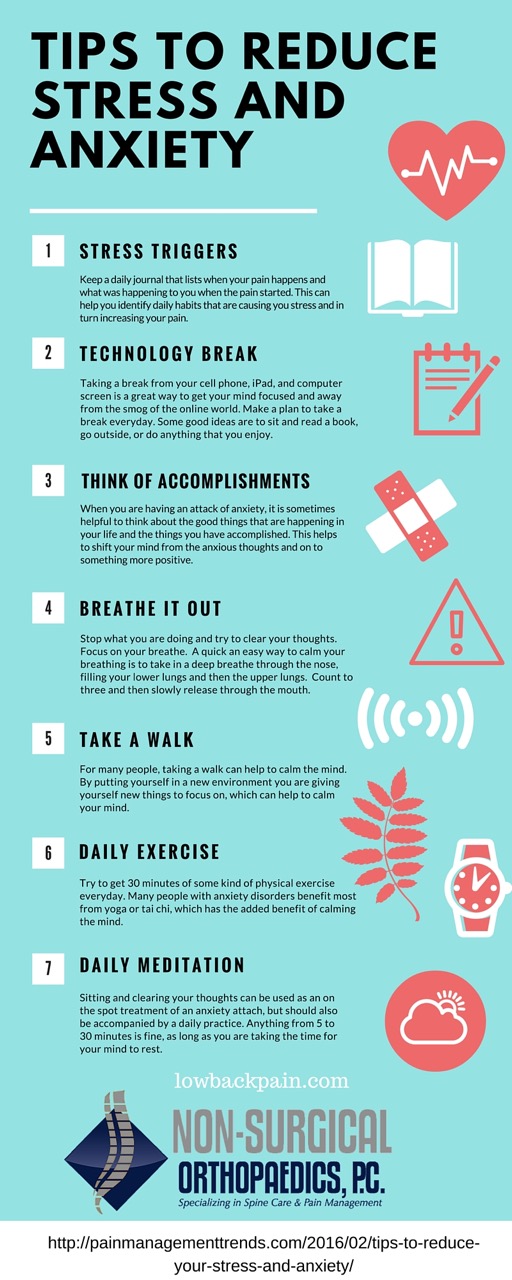How to get off depakote
Depakote Tapering Help | Valproic Acid Weaning, Titration Support
Alternative to Meds News & Blog Articles
Alternative to Meds Does Not Provide Rapid Detox
There are, rarely, instances when rapid or abrupt discontinuation of a drug like Depakote is medically necessary to save the life of the patient. For example, anticonvulsant-induced movement disorders, and other potentially life-threatening reactions such as Stevens-Johnson syndrome are rare but are known adverse events associated with Depakote. These must be treated in a hospital setting such as an emergency ward or ICU where abrupt discontinuation is most safely achieved.4,28 Alternative to Meds cannot provide the emergency medical treatment that is needed for rapid withdrawal in such cases, and we are not in a position to give guidance regarding rapid Depakote withdrawal.
Begin Depakote tapering only when you are in a stable condition.
It is best to begin a Depakote taper when the person is reasonably tolerating the medication, sleeping well, eating regularly, doing regular exercise, is under competent medical oversight from a willing prescriber. The best candidate would have eliminated caffeine and other stimulants, alcohol use, marijuana, or other recreational drug use because these substances can interact with and interfere with the medication’s mechanisms of action. This can throw a wrench into any taper program. having a support circle is extremely beneficial for support from family, close friends, and sympathetic mentors. Also arranging one’s life in an organized fashion might include engaging in hobbies or light work to focus on. If you are not sleeping well, that should be taken care of with the help of your prescriber or using holistic means that work well for you beforehand.
Contracting for safety — what it means.
A person in a manic state may become unwilling or unable to follow directions. However, following directions is vital for a successful taper. It is recommended to discuss and voluntarily draw up a written contract that can be presented when needed. Putting this solid commitment in writing to agree to follow the doctor’s tapering directions can get things back on track. For example, if the person has stopped their meds and has become manic or psychotic, they may become unwilling to continue the taper as agreed. This is a safety risk for the person that the contract for safety was put in place to remedy. Part of the agreement would be to acknowledge that non-compliance will result in police involvement, or having to go to the hospital. For the person’s own safety and those around them, the contract for safety is a vital safety net for anyone tapering from ACDs and other unpredictable neuroleptic drugs.20
For example, if the person has stopped their meds and has become manic or psychotic, they may become unwilling to continue the taper as agreed. This is a safety risk for the person that the contract for safety was put in place to remedy. Part of the agreement would be to acknowledge that non-compliance will result in police involvement, or having to go to the hospital. For the person’s own safety and those around them, the contract for safety is a vital safety net for anyone tapering from ACDs and other unpredictable neuroleptic drugs.20
Set up medical support before your Depakote taper.
There are holistic psychiatrists and other prescribers who can assist you with an outpatient-style taper. Certainly, we recommend inpatient care when possible, but we know it may not always be possible or practical for everyone. When you find your outpatient doctor, you are welcome to share our information with them if you like, and we hope it helps open the discussion.
Eliminate all forms of caffeine or other stimulants, and recreational drugs.

This is so important it probably should be #1 on the list of guidelines. Use of stimulants, even too much coffee, tea, or soft drinks, alcohol or recreational drug use, can all potentially land you in the hospital. This is because of the mechanics of how stimulants and alcohol impact Depakote, resulting in a flood of excitatory neurochemicals. Restrict these items and stay safe.15,18,19
Food choices to control blood sugar spikes.
Blood sugar spikes and crashes can disrupt tapering with a vengeance. Choose low-glycemic, protein-based foods and snacks to prevent unnecessary problems. Don’t let hunger disrupt your progress. Breakfast should be protein-based giving a good start to the day. Follow up with smaller protein-based meals that also incorporate your favorite vegetables throughout the day. Experiment with some rutabaga or cauliflower for “mashed potatoes” — delicious with butter! Avoid refined flours and sugars or find low-carb replacements. Snacks like non-starchy veggies, peanut butter, avocado, raspberries, blueberries, dill pickles, cheeses, delicious cold cuts, and other sugar-free foods can deliciously fill in the gaps as needed. 13
13
Many Benefits of Exercise.
Exercise has been documented well for the benefits to physical and mental health. For example, Sharma et al’s comprehensive summary24 of benefits lists improved mood, energy, and better sleep that should be emphasized and encouraged by mental health professionals. In addition to these benefits, Albrecht Messerschmidt’s 2010 book, Comprehensive Natural Products II, discusses the role of oxygen in certain chemical reactions, such as modulating dopamine molecules.25
This would be a very good reason to blend some aerobic, cardio exercise into the daily routine where a person with excess dopamine may benefit from this regulatory function. According to Science Daily, regulating the “happy hormone” dopamine is important. Too little dopamine is linked to Parkinson’s disease, and too much dopamine is linked to mania, hallucination, or other psychiatric symptoms. Exercise is an extremely good tool that can help regulate this important hormone. 26
26
Use the smallest milligram dose of Depakote available to use for the taper.
The smallest milligram dose of Depakote is the dark pink oval 125mg tablet. This does not mean you want to drop to the lowest dose. Smaller pills will help configure the medication total accurately. For example, if you are on 1500mg Depakote, you will want to have the 125mg version available so that if you were to drop down to 1375mg, you could take two of the 500mg (for 1000mg), cut one of the 500mg in half (for 250mg), and then add one of the 125mg to equal a total of 1375mg. It also might be that you get the 250mg and the 125mg versions prescribed to make the math easier. You can cut the Depakote 125mg in half giving you 62.5mg. These small cuts are not necessary for everyone, but for some, slowing it way down is the only path to re-regulation after the use of the drug. You can cut any of the Depakote versions in half to configure the correct milligram dosing needed. However, if you are on Depakote ER when you cut the pill, it will lose the extended-release attribute. They do make a 250mg Depakote ER version. So if you are on the ER version, many people can configure the tapering dosing amount in 250mg increments. If you are planning to make smaller than 250mg cuts, the regular non-time-released version would be likely easier for that purpose. So let’s say a person is trying to get to 875mg. They might take three 250mg Depakote ER, and 125mg Depakote (non-time-release), for a total of 875mg. These configurations can be worked out with your prescribing physician for accuracy of dosage. Keep a written record — don’t rely on “mental math” in the middle of a Depakote taper.
However, if you are on Depakote ER when you cut the pill, it will lose the extended-release attribute. They do make a 250mg Depakote ER version. So if you are on the ER version, many people can configure the tapering dosing amount in 250mg increments. If you are planning to make smaller than 250mg cuts, the regular non-time-released version would be likely easier for that purpose. So let’s say a person is trying to get to 875mg. They might take three 250mg Depakote ER, and 125mg Depakote (non-time-release), for a total of 875mg. These configurations can be worked out with your prescribing physician for accuracy of dosage. Keep a written record — don’t rely on “mental math” in the middle of a Depakote taper.
Other medications you are on.
The CDC reported that between 2015 and 2018 about 24% of the US population took 3 or more medications over a 30-day period, and over 12% took 5 or more medications in the same period. It is not at all unlikely that a person who has been taking Depakote for some time may have also been prescribed other medications for various reasons. Tapering within an inpatient setting would be particularly advised in this case. The order or sequence of which medications to taper is vital so as not to overwhelm the body by introducing too much change all at once. These matters can be assessed and managed more easily in an inpatient setting, as both the micro-changes and the broader modifications can be made when needed on an immediate basis.21 In any case it would be advised to speak with your prescribing doctor who is helping with your taper and discuss the best sequence, depending on what medications were prescribed and for what reasons they were originally prescribed.
Tapering within an inpatient setting would be particularly advised in this case. The order or sequence of which medications to taper is vital so as not to overwhelm the body by introducing too much change all at once. These matters can be assessed and managed more easily in an inpatient setting, as both the micro-changes and the broader modifications can be made when needed on an immediate basis.21 In any case it would be advised to speak with your prescribing doctor who is helping with your taper and discuss the best sequence, depending on what medications were prescribed and for what reasons they were originally prescribed.
Factors that would have to be considered include how long a person was taking each drug, the symptoms the person was attempting to control, current symptoms, and other issues that are unique to each individual.
How long will Depakote tapering last?
Because each person has unique biomarkers, genetic profile, medical history, sensitivities, individualized sets of symptoms, and so on, there is no “one-size-fits-all” when it comes to Depakote tapering. Like maneuvering down a mountain road, sometimes shifting to a lower gear is more effective than slamming on the brakes too aggressively. Slow and safe are the keywords to keep in mind.
Like maneuvering down a mountain road, sometimes shifting to a lower gear is more effective than slamming on the brakes too aggressively. Slow and safe are the keywords to keep in mind.
Some medications may take months, or even years to resolve as demonstrated in benzodiazepine clinical studies,22 as well as studies on discontinuation of mood stabilizers.23
However, we have observed that when effective tapering support is provided, these numbers typically decrease as the body is maximally assisted in the rehabilitation of its normal neurochemistry.
Red Flags of Depakote Tapering
Returning to our analogy of driving a logging truck down a mountain with switchbacks on an icy road, you have to go light on the accelerator — go slow — and be ready to use your brakes. If you are a patient, skillful driver, you will get safely down the mountain. Free-wheeling it will likely end in a crash — an avoidable disaster. Accelerating around the turns because it feels good can turn out like the wreck that you would anticipate in our driving scenario.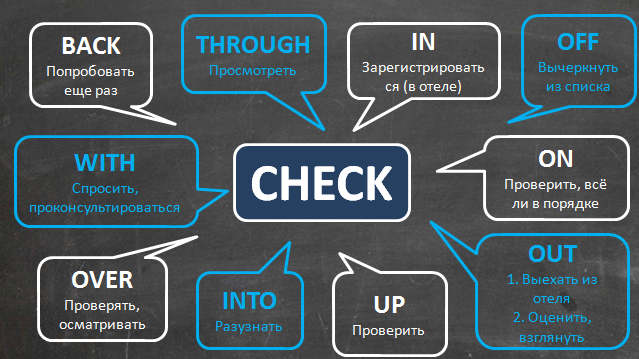 We observe similar laws of gravity and inertia involved in Depakote tapering. Go slow so you can get down the mountain. That is the over-arching axiom.
We observe similar laws of gravity and inertia involved in Depakote tapering. Go slow so you can get down the mountain. That is the over-arching axiom.
Not eating, not sleeping, intense side effects, and perseverating (obsessing) over a certain topic that will not leave your mind are all red flags. These are signs you are heading into the danger zone. For instance, after the second day of not sleeping, that could be a signal to pay attention to. It may be that you need to go back up on your medications. Then you can work your way back to the earlier dose. Please talk to your prescriber about the likelihood of encountering these moments of crisis before you begin Depakote tapering so you have a better understanding of what to expect. Don’t try to figure it out mid-crisis. You don’t want to end up in the hospital back at square one. If you begin to feel you pose a danger to yourself or those around you, just play it safe and get checked in the hospital. Hospitalization is not a failure. It could be that being medication-free is not the best outcome. Or it could signal that a much longer withdrawal period is needed. Watch for red flags and respond to them by collaborating with your prescriber without delay.
It could be that being medication-free is not the best outcome. Or it could signal that a much longer withdrawal period is needed. Watch for red flags and respond to them by collaborating with your prescriber without delay.
Bridge medications for Depakote tapering.
Some persons may do well using what are referred to as bridge medications to ease Depakote withdrawal. At Alternative to Meds Center, various methods of tapering can safely ease withdrawal issues and bridge medications can be designed on an individual basis.
Limiting stimulating media during Depakote Tapering.
Wrestling with life questions, religious matters, and watching over-stimulating movies or TV, can all be overwhelming for someone attempting Depakote tapering. Better activities might include outside walking, physical activity, hobbies you enjoy, light reading, light work, or things that can pleasantly extrovert the attention. These types of activities can act as grounding elements that support your tapering process very well.
Depakote Alternatives and Depakote Withdrawal Links
We have pages on our site that address Depakote alternatives that can be used during the tapering process. We strongly recommend you review these pages. Quick links are Antipsychotic Alternatives for general information on nutrition, etc., and Depakote Alternatives. You may also want to consider reading the Depakote Withdrawal page.
Depakote Side Effects
The FDA drug label3 lists the following:
- Life-threatening pancreatitis (all ages)
- Coma, severe or fatal encephalopathy (loss of brain function)3,8
- Dementia
- Liver failure (fatal hepatotoxicity)
- Seizures, tremors
- Suicidal thoughts and behavior as early as the 1st week of taking Depakote
- Decreased blood platelet levels
- Drowsiness, sedation, confusion, dizziness
- Stevens-Johnson syndrome, toxic skin necrolysis, temporary hair loss, rashes
- Nausea
- Constipation, diarrhea, abdominal cramps
- Headaches
- Sexual loss of interest
- Anxiety, nervousness
- Depression
- Mood swings, uncontrolled laughing or crying, often at inappropriate times
- Anorexia, weight gain, weight loss
- Bronchitis, fever, flu syndrome
- Bleeding under the skin resulting in purple patches
- Amnesia
- Blurred vision, double vision
- Abnormal thinking
- Insomnia
- Abnormal muscle weakness
- Accidental injury
Notes on Rebound Symptoms after Stopping Depakote Too Quickly.

For a person with epilepsy to abruptly stop or even reduce Depakote, one of the most concerning reactions is episodes of seizures that do not stop, also called status epilepticus.6 For bipolar persons, a sudden cessation of Depakote can bring on a return of the person’s original symptoms such as mania, insomnia, etc. A person who was taking Depakote as a treatment for migraines may have a return of migraines, which may be considerably more severe than before taking valproate. A person taking Depakote as a mood stabilizer, for bipolar, for headaches, or for other conditions may find that reducing the drug too quickly can cause intense reactions. Sometimes these withdrawal adverse effects can linger on if they are not addressed in a healthy way as part of the tapering process.7
Depakote Withdrawal Symptoms
Depakote withdrawals can include both rebound (returning) symptoms and new symptoms, including the following:
- Rebound seizures
- Seizures in non-epileptic persons 9
- Anxiety, agitation, irritability
- Depression
- Insomnia
- Headache
- Muscle aches, weakness
- Loss of coordination, loss of concentration, feeling faint
- Twitching
- Nausea, vomiting
- Tremors, shaking
- Perspiring excessively
- Photophobia (hyper-sensitive to light)
- Impaired memory
- Tachycardia (racing heart rate at rest)
- Anorexia
Slowly reducing the medication with other support mechanisms in place are the means used to offset these reactions.
WARNING: Never abruptly or quickly stop taking Depakote. Find help to assist you with the challenges of Depakote tapering or coming off any psychoactive substance.
What is Depakote?
Depokate is an ACD or anticonvulsant drug, often used as a mood stabilizer in bipolar conditions, and used to control epileptic seizures and migraine headaches. The generic name is divalproex sodium or simply valproate or valproic acid. There is an extended-release version of the drug called Depakote ER (sustained-release), which is taken once a day and released slowly over a 24-hour period. There is also a “delayed-release” version called Depakote EC (enteric-coated) which is NOT time-release but has a protective enteric coating that dissolves only after it reaches the intestines, then releasing the medication all at once. The EC or delayed-release (non-sustained release) version must be taken several times a day. There is also a “sprinkles” version which is delayed-release (not 24-hr sustained-release) that was designed to be sprinkled on soft food for those who have trouble swallowing capsules.6
There is also a “sprinkles” version which is delayed-release (not 24-hr sustained-release) that was designed to be sprinkled on soft food for those who have trouble swallowing capsules.6
While this anticonvulsant drug is not a benzodiazepine, in their 2021 book entitled “Valproic Acid.” Rahman and Nguyen conclude that the mechanism of action is in some ways similar, and involves the control of GABA distribution (and other neurochemicals) along the CNS.10 GABA is a calming natural chemical, though the complex mechanism of action and its interactions with other transmitters and molecules and messaging systems are not entirely understood. Its calming properties make it useful in acute situations such as alcohol withdrawal, where controlling symptoms of alcohol withdrawal is desired without the use of benzodiazepines.11
Contact Alternative to Meds Center
You or your loved one may be struggling with side effects, tolerance, or other issues that may be blocking your ability to enjoy natural mental health and be truly well. You owe it to yourself to find out more about how the Alternative to Meds Depakote tapering program works, whether you feel you would be a good candidate, and how it could possibly assist you to overcome these challenges.
You owe it to yourself to find out more about how the Alternative to Meds Depakote tapering program works, whether you feel you would be a good candidate, and how it could possibly assist you to overcome these challenges.
Depakote Withdrawal Help | Valproic Acid Side Effects, Treatment
Alternative to Meds News & Blog Articles
What is Depakote?
We have provided information below for anyone looking for information about Depakote withdrawal symptoms, divalproex sodium side effects, and holistic treatment help for Depakote withdrawal. Depakote comes in 5 different oral forms, given here in descending order of absorption rates:
VPA syrup: (valproic acid) sold as “Depakene”
VPA capsule: (valproic acid)
Divalproex sodium sprinkles Depakote sprinkles come in a capsule that can be opened and added to soft food
Divalproex sodium enteric-coated – delayed-release tablet
Divalproex sodium ER – extended-release tablet
You will find more information below regarding drug classification, information about its mechanism of action, long-term effects, and other treatment information including holistic treatment for Depakote withdrawal. Depakote is an FDA-approved anti-seizure (antiepileptic) medication.2
Depakote is an FDA-approved anti-seizure (antiepileptic) medication.2
Black box warnings: include fatal liver disease, major birth defects such as spina bifida and neural tube malformations, and rapidly emerging life-threatening pancreatitis in all age groups. Though not included in the black box, a nearly doubled risk compared to placebo for suicidal thinking and behavior has been demonstrated in clinical trials in ALL populations.2,16
What is Depakote Used For?
Depakote is used in the treatment of seizure disorders, such as epilepsy, often in combination with other medications.
The FDA approved Depakote for the treatment of bipolar disorder after an unspecified number of 3-week long trials.2 Bipolar disorder has a high propensity for misdiagnosis.3,4 Manic episodes might be considered a bipolar symptom and are described as distinct periods of abnormally sustained elevated mood and other characteristics including irritability and hostility. Other mania symptoms include machine gun-type speech, reduced need to sleep, grandiosity, absence of good judgment, motor hyperactivity, and what can appear to be an expansive flood of fanciful ideas. Depakote was not safety-tested for longer 3-weeks for mania and cautions closely monitoring and reevaluating the usefulness of Depakote for a patient in this situation.2
Other mania symptoms include machine gun-type speech, reduced need to sleep, grandiosity, absence of good judgment, motor hyperactivity, and what can appear to be an expansive flood of fanciful ideas. Depakote was not safety-tested for longer 3-weeks for mania and cautions closely monitoring and reevaluating the usefulness of Depakote for a patient in this situation.2
Depakote is also approved for the prevention of migraine headaches in adults and children. Please see notes in the holistic treatment section of this article for documented efficacious holistic headache treatments that do not include antipsychotic or antiseizure medications.
Please note: Depakote is not recommended for pregnant women or women of child-bearing age for any reason due to the risks to what is now termed “fetal valproate syndrome.” Children born to mothers taking valproate during pregnancy may suffer withdrawals at birth, and there is a high risk for the baby to be born with birth defects or other medical problems.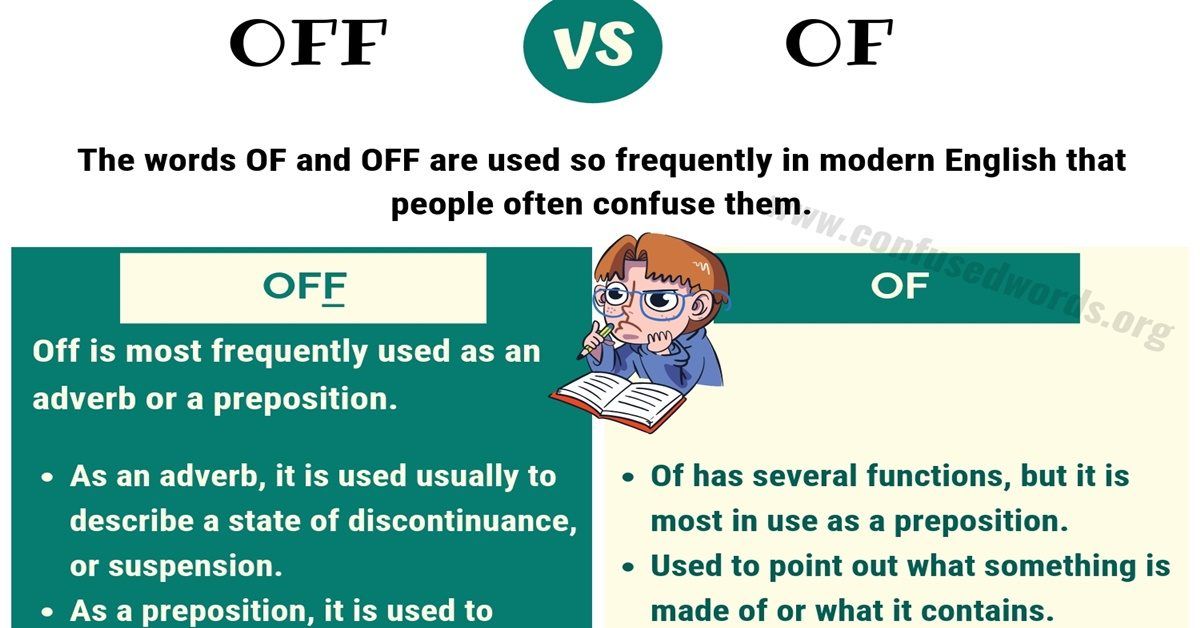 These adverse events were documented in clinical trials authored by Thisted and Ebbeson, and as reported by the National Organization of Rare Diseases.2,5,19,20
These adverse events were documented in clinical trials authored by Thisted and Ebbeson, and as reported by the National Organization of Rare Diseases.2,5,19,20
Depakote is sometimes used as an adjunctive or add-on medication in the management of schizophrenia, psychosis, or other psychiatric disorders. particular caution is advised when other medications are prescribed as they may slow or speed up the rate at which Depakote is metabolized.
Off-label uses include the treatment of alcohol or other drug dependencies, diabetic neuropathy, and to quell impulsivity and aggressive behavior such as after traumatic brain injury, based on rat studies showing decreased permeability of the blood-brain barrier in rats who were given impacts to the brain with an electromagnetic cortical-impact device followed by valproate, and another study linking valproate with a decrease in neuronal damage after inducing continuous and repeated electrically-induced seizures in rats. 16,17,18 Where a drug does not have an accessible and robust body of documentation concerning human long-term clinical trials to rely on, one would be well-advised to do one’s own research on such medication as carefully and as thoroughly as possible to make informed decisions about starting or stopping such drugs. Additional important information on these topics follows.
16,17,18 Where a drug does not have an accessible and robust body of documentation concerning human long-term clinical trials to rely on, one would be well-advised to do one’s own research on such medication as carefully and as thoroughly as possible to make informed decisions about starting or stopping such drugs. Additional important information on these topics follows.
Notes on Depakote and Bipolar
It is vital to note that Depakote (valproate) was approved for treating bipolar disorder after only very short trials were done on hospitalized acute mania patients. No long-term trials were ever completed that demonstrated the long-term safety or effectiveness of Depakote. Nonetheless, Depakote has been prescribed to millions of people since its approval in 1983. There is a much larger body of evidence that has accumulated post-marketing of the drug that includes adverse side effects, symptoms of withdrawal, and other information below.
Always seek reliable medical advice before starting or stopping a prescription drug such as Depakote, and before adding other medications that may interact and cause unexpected reactions.
Discontinuing/Quitting Depakote
It may become necessary or desirable to stop Depakote. How to quit Depakote and Depakote alternatives are what we specialize in at Alternative to Meds Center. We have protocols for tapering Depakote and bridging over to natural alternatives to Depakote that can make the withdrawal from Depakote gentle and sustainable. Except in certain circumstances where immediate cessation is required to save the patient’s life, such as liver failure, life-threatening pancreatitis, or other conditions, Depakote should be gently tapered off with proper monitoring, support, and guidance.
The FDA label indicates that where hepatic dysfunction, pancreatitis, toxic levels of ammonia or other life-threatening conditions emerge, Depakote should be immediately stopped.2
If tapering is done correctly it can be a mild procedure. Done too fast, it can be extremely difficult and can introduce undesirable risks to health.
Depakote Alternative Names and Slang
Other trade names for the generic valproate, sodium valproate, or Divalproex delayed-release, include Depakene, Depakote ER (extended-release), Depakote Sprinkles, Stavzor, and Alti-Valproic.
The drug is available in a soft-gel capsule, tablet, or syrup form. Depakote Sprinkles are designed so that if a person cannot swallow a capsule or tablet, the drug can be sprinkled on applesauce or other types of soft food. One capsule of Sprinkles is meant to be used all at once.
Depakote Side Effects
Depakote is often administered as an adjunctive medication, for instance with antipsychotics, SSRIs, SNRIs, or other mood-stabilizing drugs. It may be difficult to ascertain in such circumstances exactly what drug is causing what side effect; therefore each patient should be monitored carefully in this regard for reactions needing medical attention.
The FDA2 has published some known adverse side effects that require careful monitoring while on Depakote, including:
- Hepatotoxicity: liver failure, leading to fatality, which may follow symptoms such as weakness, lethargy, vomiting, anorexia, and facial edema.
 Especially if a person has a prior history of liver disease, regular physical examinations, as well as serum liver tests, should be done to monitor the person closely for signs of liver toxicity.
Especially if a person has a prior history of liver disease, regular physical examinations, as well as serum liver tests, should be done to monitor the person closely for signs of liver toxicity. - Birth defects are linked to taking Depakote during pregnancy, where the infant may develop deformities of the limbs, heart, craniofacial, and neural tube defects leading to spina bifida, and others. Birth defects occur 4 times higher where mothers took Depakote compared to other epileptic medications.
- Lowered cognitive scores after in utero exposure to Depakote: have been studied and shown as significantly lower in children born to epileptic mothers taking Depakote compared to children born to mothers taking some other AED or no AED. Since it has not been established if there is a specific period of risk during pregnancy for such birth defects including lowered IQ, the consensus is that women of child-bearing age should not be prescribed Depakote.
 However, should pregnancy occur while on a prescription of Depakote, the drug should not be withdrawn abruptly due to risk of seizure and other reactions, and possible fatality to the fetus.
However, should pregnancy occur while on a prescription of Depakote, the drug should not be withdrawn abruptly due to risk of seizure and other reactions, and possible fatality to the fetus. - Fatal pancreatitis: in both adult and children are linked to Depakote. Where this condition presents, it can progress rapidly and is considered life-threatening, requiring immediate hospitalization. Some warning signs of pancreatitis can include nausea, vomiting, pain in the abdomen, anorexia, and the patient should be immediately evaluated for hemorrhages and other symptoms of pancreatitis.
- Suicidality: a two-fold increase in suicidal ideation and behavior in both adults and children. Four suicides occurred within a twelve-week trial.
- Abnormal bleeding
- Hypothermia
- Other: side effects include rash, somnolence in the elderly, dizziness, indigestion.
Migraine treatment - Clinic Zdorovye 365 Yekaterinburg
Doctors say that many women don't talk about how badly their head hurts because they don't want to complain too much. One of the problems may be that people suffering from migraines think that nothing will help them. They have watched their mother or grandmother suffer from a migraine and think they should suffer too. Despite significant advances in pharmacology and the large number of treatment options that are available today, many continue to take the ineffective drugs that their older relatives used to combat migraine pain. nine0003
One of the problems may be that people suffering from migraines think that nothing will help them. They have watched their mother or grandmother suffer from a migraine and think they should suffer too. Despite significant advances in pharmacology and the large number of treatment options that are available today, many continue to take the ineffective drugs that their older relatives used to combat migraine pain. nine0003
Typically, migraine patients take some kind of pain medication, lie in bed, try to overcome nausea and vomiting, and protect themselves from lights, sounds, and smells that can trigger or exacerbate a migraine attack.
Unfortunately, many migraine sufferers do not see a doctor, despite the fact that today there are many effective treatments.
If you have migraine attacks, it is important to build a good relationship with your doctor because migraine is a recurring disease. The first step is to find a doctor with experience in migraine treatment who understands that migraine is a disease that occurs due to changes at the biological level. nine0003
nine0003
We encourage you to find a doctor who is willing to consider several treatment options, including prescription and over-the-counter medications and lifestyle changes.
During treatment, communication can be poorly tolerated by patients for a number of reasons, but it is the key to effective treatment. About half of migraine patients have stopped looking for a way to deal with their headaches, in part because they were not happy with the treatment, a statistic that can be improved by patient-physician communication. nine0003
Communication and treatment counselors can provide advice on how to start a dialogue with a doctor, discuss symptoms and treatment options. Many people believe that if you mark a calendar when attacks occur, you can learn how to control headaches. This method is especially effective when you and your doctor begin to draw up a treatment program.
In the headache calendar, note:
- when headaches occur nine0019 severity and duration of headaches
- possible pathogens, including diet, stress, environment, etc.
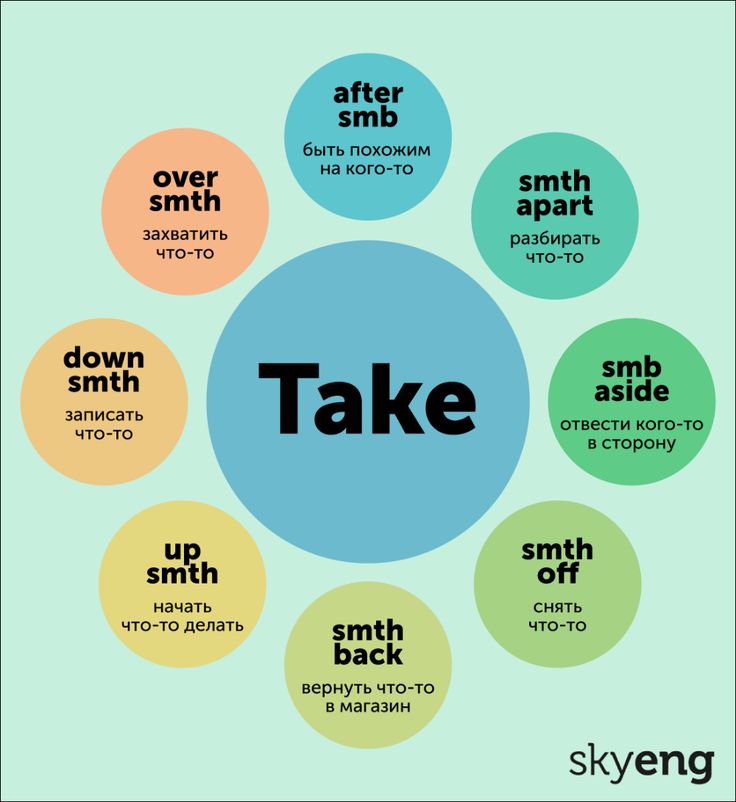
- dates of menstruation
- remedies that did not help with pain
The National Headache Foundation of America website www.headaches.org also provides a wealth of useful information for people with headaches, including a headache diary:
treatment and then evaluate the treatment you are currently receiving. Rate how satisfied you are with the chosen treatment program (from "completely satisfied" and ending with "extremely dissatisfied" with intermediate ratings). Rate the treatment according to the following criteria:
- fast acting
- causes the fewest side effects
- non-sedating
- reduces sensitivity to bright lights and/or sounds
- easy to use
- relieves headache
- only needs to be taken once a week
- exists in the form of injections
- is available as a nasal spray
- is available as 9 tablets0020
- is proven effective
- is available in various shapes
Also rank these criteria according to how important they are to you. Use the description (from "very important" to "not important") to help you prioritize and tailor a treatment program that's right for you.
Use the description (from "very important" to "not important") to help you prioritize and tailor a treatment program that's right for you.
Next, make a list of activities that you think you have to neglect because of a migraine. Be sure to include work, relationships with family members, personal time, sleep, sports, social status, or other activities that have to be relegated to the background due to migraine attacks. nine0003
In fact, if you write down what you have to give up because of a migraine and discuss it with your doctor, then the doctor will be able to choose the most comprehensive course of treatment. Most often, doctors select a more effective method of treatment if they receive detailed information about the symptoms.
Unfortunately, often during consultations little attention is paid to activities that have to be abandoned because of a headache. In order to get more information about such activities, there is, for example, a questionnaire that estimates the number of activities that have to be abandoned due to migraine. nine0003
nine0003
Then make an appointment with the doctor to discuss your specific case. Take your lists with you. Ask for a course of treatment that takes into account the factors that seem most important to you in managing your headache and are consistent with your lifestyle. Before leaving the doctor's office, make an appointment to discuss the effectiveness or failure of the chosen treatment option.
Finally, after starting treatment, write down in a diary the frequency and severity of headaches, and how the treatment affects you. At your next visit, show your doctor your notes and, if necessary, ask for changes to your treatment. Finding the right treatment for you takes patience and adjustments. nine0003
Medication
The doctor makes a treatment plan based on how often headaches occur. Rare headaches (once or twice a month) are usually treated with fast-acting, strong medications that reduce headache, nausea, and increased sensitivity to bright lights and/or sounds. Women with migraine often have to change the type of treatment. They are recommended preventive treatment.
Women with migraine often have to change the type of treatment. They are recommended preventive treatment.
If you have frequent or prolonged headaches, or if you have pain that interferes with your daily activities, you will need to take medication daily to prevent migraines. nine0003
Drugs to treat or shorten the duration of migraine
One of the most commonly used drug classes is the triptans. Scientists aren't sure exactly how they work, but these drugs reduce migraine headaches and ease the aura. Specialized triptans include naratriptan (Amerge by Amerge), rizatriptan (Maxalt by Maxalt), sumatriptan (Imitrex by Imitrex), zolmitriptan (Zomig by Zomig), almotriptan (Axert, Axert), frovatriptan (Frova). , Frova) and eletriptan (Relpax by Relpax). All triptans listed are available in tablet form. "Imitrex" and "Zomig" are also produced in the form of a nasal spray, and "Imitrex" in the form of injections. The fastest and most effective drugs in the form of injections. nine0003
nine0003
Listed below are drugs used for emergency management of severe migraine pain :
- dihydroergotamine (Migrenol Migrainol, DHE 45)
- Ergotamine, a drug that was commonly prescribed for migraine before the advent of triptans. Ergotamine is a more economical, but at the same time, less effective option. Ergotamine is usually given to people with long-lasting (more than 48 hours) or frequent migraines.
- opioids, namely codeine
- corticosteroids, including hydrocortisone and dexamethasone
Since ergotamine and dihydroergotamine (DHE 45) can cause nausea and vomiting, they can be combined with antinausea drugs. Experts warn that ergotamine should not be taken in excessive doses by people with angina, severe hypertension, or vascular, liver, or kidney disease. The same goes for DHE. Also, this drug is not recommended for pregnant women. nine0003
Medicines to treat/prevent frequent migraine attacks :
- Beta-blockers prevent vasodilation.
 These include propranolol (Inderal Inderal), atenolol (Tenormin Tenormin), metoprolol (Lopressor Lopressor), nadolol (Corgard Corgard), and timolol (Blocarden Blocadren). Caution: Doctors recommend that people taking beta-blockers, and especially those with a family history of heart disease, do not stop taking these drugs abruptly. nine0020
These include propranolol (Inderal Inderal), atenolol (Tenormin Tenormin), metoprolol (Lopressor Lopressor), nadolol (Corgard Corgard), and timolol (Blocarden Blocadren). Caution: Doctors recommend that people taking beta-blockers, and especially those with a family history of heart disease, do not stop taking these drugs abruptly. nine0020 - Calcium channel blockers prevent migraine in susceptible individuals. Common calcium channel blockers include: verapamil (Calan Calan, Isoptin Isoptin), nifedipine (Procardia Procardia, Adalat Adalat) and nimodipine (Nimotop Nimotop).
- Anticonvulsants. Some drugs prevent seizures, such as divalprex sodium (Depakote, Depakote), valproate (Depacon, Depacon), and topiramate (Topamax, Topamax). Some people experience migraines less often as a result of taking these medications. In large doses, they can cause side effects such as nausea, vomiting, diarrhea, hair loss, and dizziness. nine0020
- Antidepressants. In some cases, antidepressants are used to prevent migraines.
 These include tricyclic antidepressants, such as amitriptyline (Elavil by Elavil, Endep by Endep), nortriptyline (Pamelor by Pamelor, Aventyl by Aventyl), and protriptyline (Vivaktil by Vivactil).
These include tricyclic antidepressants, such as amitriptyline (Elavil by Elavil, Endep by Endep), nortriptyline (Pamelor by Pamelor, Aventyl by Aventyl), and protriptyline (Vivaktil by Vivactil). - Monoclonal antibody preparations, such as Ajovy (fremanezumab) - a drug for the prevention (reduction in the number of attacks) of episodic and chronic migraine. The more calcitonin-related peptide (CGRP) is released in migraine, the stronger and more painful the headache. Ajovi binds the CGRP neuropeptide or its receptor and blocks the migraine headache pathway. nine0020
Atypical antidepressants such as venlafaxine (Effexor) and mirtazapine (Remeron) can relieve some chemicals in the brain, such as serotonin, norepinephrine, and dopamine.
Warning: The US Food and Drug Administration warns that antidepressants increase the risk of suicide, especially in adolescents and children. Anyone taking antidepressants should be carefully screened for suicidal tendencies. If you plan to take antidepressants, discuss the risk with your doctor and always read the information on the package. nine0003
If you plan to take antidepressants, discuss the risk with your doctor and always read the information on the package. nine0003
Botox in the treatment of chronic migraine
Botox is used to treat and prevent chronic migraine attacks in adults. Chronic migraine is referred to as having a headache for more than 15 days a month, 8 or more of which are accompanied by migraine-like symptoms.
Non-drug treatments
Drug therapy for migraine is often combined with biofeedback, cognitive behavioral therapy, or relaxation techniques. nine0003
Biofeedback is a technique used to gain control over a function that would normally operate automatically (such as blood pressure or pulse rate). The function can be controlled. Relaxation techniques are applied to change function. Biofeedback uses electronic or electromechanical instruments to observe, measure, process, and feed back information about blood pressure, muscle tension, heart rate, brain waves, and other psychological functions. nine0003
nine0003
This technology can be used at home with a portable device. The ultimate goal of this treatment is to wean the patient off the machine so that they can apply the biofeedback technique at the first sign of a headache.
Through relaxation techniques, one can learn to counteract muscle tension by relaxing the mind and body using yoga, meditation, progressive relaxation, and imagery. Relaxation techniques can be used with or without biofeedback. nine0003
Cognitive Behavioral Therapy
This therapy helps to identify what is causing headaches. People who get migraine experience the same stressors as everyone else, but in migraine patients, stress can trigger migraine attacks. Thus, through specific stress management training, the thoughts, feelings, and behaviors that influence the onset of headaches can be identified and managed so that headaches do not occur. nine0003
Diet therapy
Some migraine sufferers benefit from a course of treatment focused solely on avoiding foods and drinks that cause headaches.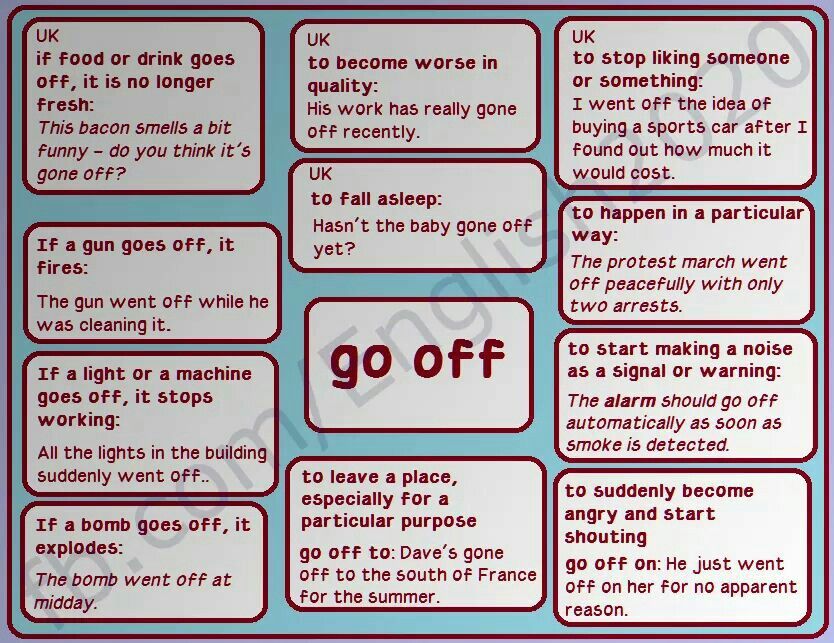 For this reason, it is necessary to keep a migraine diary to identify individual pathogens. In 30% of cases, diet helps patients.
For this reason, it is necessary to keep a migraine diary to identify individual pathogens. In 30% of cases, diet helps patients.
A diet that prevents low blood sugar (hypoglycemia), which can cause blood vessels in the head to dilate, may help some people with migraines. This condition usually manifests itself due to a long time spent without food: for example, during the night or if a person skips a meal. A headache in the morning after waking up may be a reaction to low blood sugar due to not enough food received by the body during the night. nine0003
The treatment for headaches due to low blood sugar is to eat smaller, more frequent meals. A special diet may be prescribed to stabilize the body's system that regulates blood sugar. For a similar reason, many experts also advise migraine patients not to sleep too long on the weekends, as normal blood sugar levels can be disturbed and headaches can set in.
Error 1. How to exit the filter for the second site in the search (doorway)
Error 1. How to exit the filter for the second site in the search (doorway)
How to exit the filter for the second site in the search (doorway) be.ontop.by - a blog on search engine optimization for beginners
Features. Practical cases.
Problems of promotion of commercial projects.
Konstantin Klinchuk 10/17/2018, 02:42 PM We solve problems 2356
Website pessimization
Website pessimization is a decrease in positions (-20, -30) for a large (more than 50%) number of queries. To track, just look at the position of the site, the negative dynamics (decrease in positions, for a large number of requests) changes as in the picture below. nine0003
For data analysis, use the rate in any position tracking system. I use www.allpositions.ru because of simplicity. On the example of the site www.siberian.by:
Diagnosis and problem analysis
It is impossible to determine the cause for sure or be 100% sure that you have found the cause, you can only assume theoretically.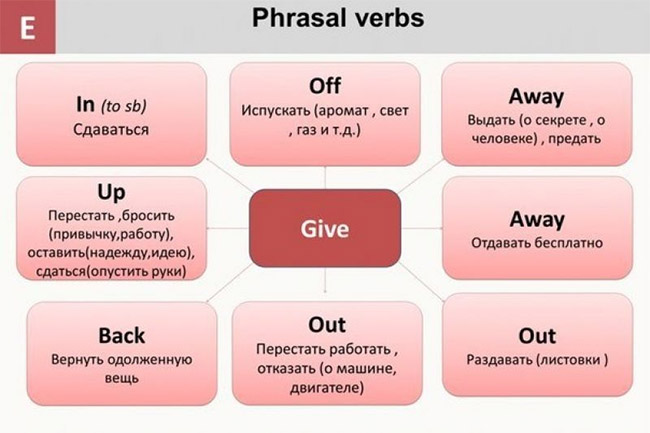
- It is practically useless to report in support of Yandex Webmaster. Get a standard type Response, without any suggestive information. nine0020
Pessimization is a significant punishment (filter) for a site from Yandex, namely, it is issued for a clear (according to Yandex information) violation of the rules.
The filter itself will not finish its action. You need to take active actions and see the results in 1-2 weeks.
The filter is also not displayed in the Yandex webmaster panel:
A group of main Yandex filters that are found quite often on the Internet and for which YandexWebmaster gives feedback:
- Filter for placing SEO links to other projects. As a rule, this does not apply to sites where links are placed in a natural way.
- Filter for non-unique site content. Sites that are created by copying information from other sites, for example through automatic parsing.
- Filter for a large number of SEO links leading to your site.
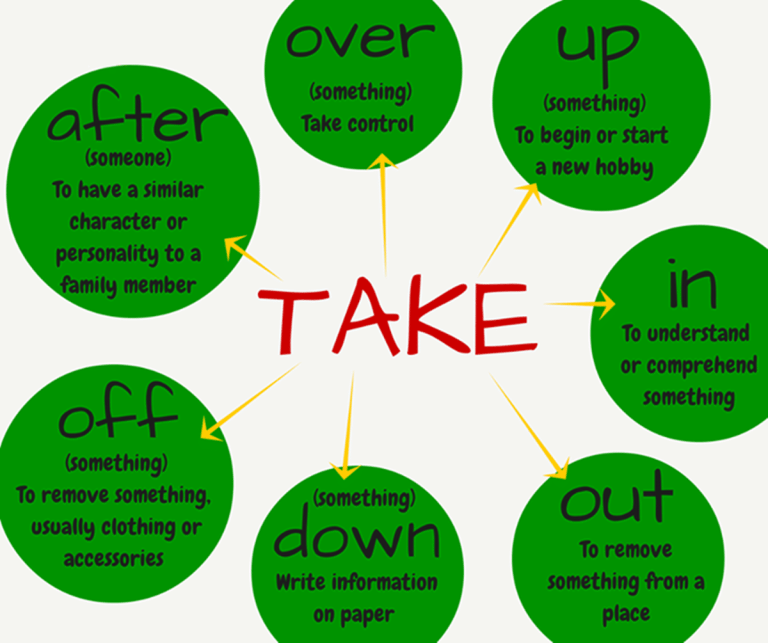
- Filter for re-optimization of site texts.
Other signs of a low-quality site, according to Yandex, can be read at the link. nine0003
In the case of the site https://www.siberian.by/, Yandex considered the site to be a doorway. Definition of Dorway in Yandex:
Pages and sites whose main purpose is to redirect the visitor to another resource using a redirect or a link.
Doorways are also prohibited in Yandex.Market. According to Yandex rules, only one site from one legal entity is accepted into the system. persons for one product, if you want to create a second website store with similar products, the approval of the site will not pass. nine0080
Doorway filter issued for information on the page https://www.siberian.by/o-pitomnike. Namely, a site with such a nursery is already on the Internet. Yandex decided that our site was created to promote another site, but this is not so.
That is, according to Yandex, it turns out that the owner of the nursery wanted to take two positions in the search instead of one, for all requests.


